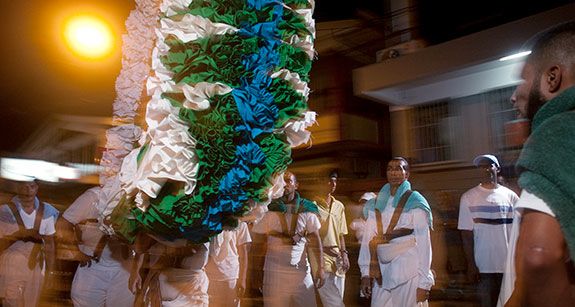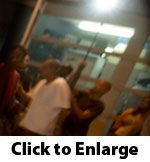Canon ETTL test in Hosay
13/02/09 23:50 Filed in: Gear

Hosay is one of the great cultural festivals of Trinidad and Tobago, but much of it happens at night under truly awful street lights. It’s possible to get decent photos with high ISO sensitivity, and some flash fill, but I wanted to try to shape the light I put on the huge tadjah structures and put a little more snap into the night photos.
I also wanted to achieve better results without carrying around a ton of equipment so this seemed like a good opportunity to test the limits of Canon’s wireless TTL (Through The Lens) synchronisation system.
For those who haven’t tried this capability of modern digital cameras, Canon (and Nikon) have created a closed loop system that allows off camera flashes to be fired with an infrared pulse with the resulting flash burst metered on the film plane for unparalleled exposure accuracy.
Put to work, you have the remarkable ability to trigger multiple strobes from the camera with the exposure controlled automatically by the camera’s settings.

Nikon lovers, I’ll be the first to admit it. Nikon’s system is much more capable and sophisticated than Canon’s system with useful niceties like being able to change exposure settings from the commander module, which makes Canon’s commander module look much less commanding by comparison.
That aside, I’d been using the wireless system where it was meant to be used, in fairly close quarters, usually in a single room where it works extremely well.
To push its capabilities, I enlisted the help of Mark Gellineau to put a second light in the picture, as it were.
The gear was as follows; Canon 580 EX strobe connected by extension cable to the hotshoe of my 5D set as the master strobe and held at arm’s length bounced into a small LumiQuest reflector triggering a Canon 420 mounted on a lightweight lightstand.

blog comments powered by Disqus